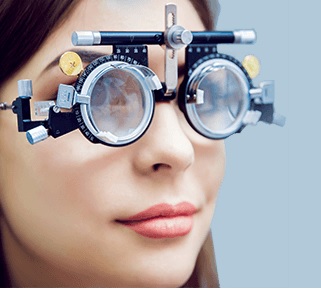Myopia (short-sightedness) is a refractive error that causes blurry distance vision. It is the most common cause of impaired vision in people under the age of 40. Myopia usually begins in childhood, but it can continue to worsen into early adulthood. This is called myopia progression.
AMN / HEALTH DESK
On the occasion of World Sight Day today, the All India Institute of Medical Sciences (AIIMS), New Delhi, organized a conference to raise awareness about eye diseases, especially myopia. Addressing the conference, the Chief of AIIMS’s Rajendra Prasad Center, Dr. J.S. Tityal, stated that myopia is growing rapidly, especially among children.
He added that preventive measures need to be taken to protect children’s eyesight. Dr Tityal advised parents to monitor their children’s screen time and encourage them to engage in physical activities. He also suggested that there is a need to establish laws restricting the use of smartphones by children under three years of age. Professor and Doctor Rohit Saxena has termed myopia a lifestyle disease.
Dr Praveen Vashisht expressed happiness over the official elimination of trachoma from the country. The World Health Organization (WHO) issued a certificate of trachoma elimination during its Regional Committee meeting in New Delhi yesterday.

In a paediatric ophthalmology outpatient department, doctors have observed that up to 10% of the children who walked in had refractive errors, and among them, 30% had myopia. This indicated the rise in prevalence of myopia among children.
Blindness and vision impairment
Key facts
- Globally, at least 2.2 billion people have a near or distance vision impairment. In at least 1 billion of these, vision impairment could have been prevented or is yet to be addressed.
- The leading causes of vision impairment and blindness at a global level are refractive errors and cataracts.
- It is estimated that globally only 36% of people with a distance vision impairment due to refractive error and only 17% of people with vision impairment due to cataract have received access to an appropriate intervention.
- Vision impairment poses an enormous global financial burden, with the annual global cost of productivity estimated to be US$ 411 billion.
- Vision loss can affect people of all ages; however, most people with vision impairment and blindness are over the age of 50 years.
Overview
Vision, the most dominant of our senses, plays a critical role in every facet and stage of our lives. We take vision for granted, but without vision, we struggle to learn, to walk, to read, to participate in school and to work.
Vision impairment occurs when an eye condition affects the visual system and its vision functions. Everyone, if they live long enough, will experience at least one eye condition in their lifetime that will require appropriate care.
Vision impairment has serious consequences for the individual across the life course. Many of these consequences can be mitigated by timely access to quality eye care. Eye conditions that can cause vision impairment and blindness – such as cataract or refractive error – are, for good reasons, the main focus of eye care strategies; nevertheless, the importance of eye conditions that do not typically cause vision impairment – such as dry eye or conjunctivitis – must not be overlooked. These conditions are frequently among the leading reasons for presentation to eye care services.
Causes
Globally, the leading causes of vision impairment and blindness are:
- refractive errors
- cataract
- diabetic retinopathy
- glaucoma
- age-related macular degeneration.
There is substantial variation in the causes of vision impairment between and within countries according to the availability of eye care services, their affordability, and the education of the population. For example, the proportion of vision impairment attributable to unoperated cataract is higher in low- and middle-income countries. In high income countries, diseases such as glaucoma and age-related macular degeneration are more common.
Among children, congenital cataract is a leading cause of vision impairment in low-income countries, whereas in middle-income countries it is more likely to be retinopathy of prematurity.
Uncorrected refractive error remains a leading cause of vision impairment in all countries amongst children and adult populations.
Prevalence
Globally, at least 2.2 billion people have a near or distance vision impairment. In at least 1 billion – or almost half – of these cases, vision impairment could have been prevented or has yet to be addressed.
Among this 1 billion people, the main conditions causing distance vision impairment or blindness are cataract (94 million), refractive error (88.4 million), age-related macular degeneration (8 million), glaucoma (7.7 million), diabetic retinopathy (3.9 million) (1). The main condition causing near vision impairment is presbyopia (826 million) (2).
In terms of regional differences, the prevalence of distance vision impairment in low- and middle-income regions is estimated to be 4 times higher than in high-income regions (1). With regards to near vision, rates of unaddressed near vision impairment are estimated to be greater than 80% in western, eastern and central sub-Saharan Africa, while comparative rates in high-income regions of North America, Australasia, western Europe, and of Asia-Pacific are reported to be lower than 10% (2).
Population growth and ageing are expected to increase the risk that more people acquire vision impairment.

Impact of vision impairment
Personal impact
Young children with early onset irreversible severe vision impairment can experience delayed motor, language, emotional, social and cognitive development, with lifelong consequences. School-age children with vision impairment can also experience lower levels of educational achievement.
Vision impairment severely impacts quality of life among adult populations. Adults with vision impairment can experience lower rates of employment and higher rates of depression and anxiety.
In the case of older adults, vision impairment can contribute to social isolation, difficulty walking, a higher risk of falls and fractures, and a greater likelihood of early entry into nursing or care homes.

